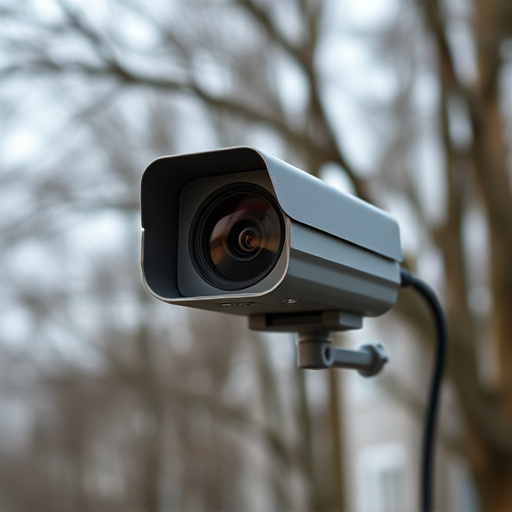Convincing decoy cameras are a growing trend in business security, offering a legal and ethical solution to surveillance needs. These sophisticated devices blend into their environment while recording high-quality footage, helping businesses deter threats, monitor activities, and make informed security decisions. When implementing these cameras, prioritize transparency, staff training, and ethical practices to respect privacy rights while enhancing operational safety. Choose the right camera features and placement strategies based on specific business needs and space requirements.
In today’s digital age, covert recording plays a pivotal role in business security. This comprehensive guide explores the art of identifying ideal recording spots using convincing decoy cameras, while navigating legal boundaries and ethical considerations. We delve into advanced technologies, strategic placement techniques, and best practices to ensure responsible implementation. From understanding covert recording’s implications to selecting the right equipment for your specific needs, this resource equips businesses with effective strategies.
- Understanding Covert Recording and Its Legal Implications
- Choosing the Right Decoy Camera for Your Business Needs
- Placement Strategies: Discreetly Identifying Ideal Recording Spots
- Advanced Technologies in Covert Surveillance Equipment
- Ethical Considerations and Best Practices for Responsible Implementation
Understanding Covert Recording and Its Legal Implications
Covert recording, also known as hidden camera surveillance, involves capturing audio or video footage discreetly and without the knowledge or consent of those being recorded. This practice has become increasingly common for businesses aiming to protect their operations, employees, and customers through surveillance. However, it’s crucial to understand the legal implications surrounding covert recording to ensure compliance with privacy laws.
In many jurisdictions, there are strict regulations regarding the use of hidden cameras, especially in public spaces or areas where individuals have a reasonable expectation of privacy. Businesses must employ convincing decoy cameras that mimic everyday objects to maintain legality and avoid causing alarm or intrusion. Proper placement, ethical use, and transparency about surveillance practices are essential to strike a balance between security and individual rights in the digital age.
Choosing the Right Decoy Camera for Your Business Needs
When selecting a decoy camera, it’s crucial to align your choice with specific business requirements. These convincing decoy cameras serve as powerful deterrents against covert recording in sensitive areas like retail stores, offices, or manufacturing facilities. The right camera should offer high-resolution images and videos, infrared capabilities for low-light conditions, and motion detection features to trigger alerts when suspicious activity is detected.
Consider your establishment’s size, layout, and security goals. For smaller spaces, a discreetly designed decoy camera might suffice. Larger areas may demand more robust systems with multiple cameras strategically placed. Advanced models often come with cloud storage options for remote access and monitoring, enhancing the efficiency of your security measures.
Placement Strategies: Discreetly Identifying Ideal Recording Spots
In the quest for optimal covert recording spot identification, strategic placement is paramount. One effective approach involves employing convincing decoy cameras tailored for business environments. These sophisticated devices blend seamlessly into their surroundings, masquerading as everyday fixtures while secretly capturing crucial footage. Positioned strategically in high-traffic areas or near sensitive equipment, they provide invaluable insights without drawing unwanted attention.
Whether discretely mounted on walls, concealed within decorative elements, or integrated into lighting fixtures, these decoy cameras offer a multi-faceted advantage. They not only serve as effective deterrents but also gather essential data for analysis. By understanding the flow of individuals and potential risks, organizations can make informed decisions about security measures, ensuring a comprehensive safety strategy that addresses both visible and hidden threats.
Advanced Technologies in Covert Surveillance Equipment
In the realm of covert recording, technology plays a pivotal role in enhancing surveillance capabilities. One notable advancement is the emergence of convincing decoy cameras designed specifically for business applications. These sophisticated devices blend seamlessly into their surroundings, appearing as ordinary fixtures while secretly capturing high-quality footage. They offer a subtle yet powerful solution for businesses seeking to monitor activities without raising suspicions.
The market now abounds with innovative options, from mimicry in design to advanced sensor capabilities. Some models feature infrared technology for low-light conditions, while others incorporate motion sensors and night vision, ensuring round-the-clock coverage. These advanced features make it easier to capture critical moments, providing businesses with valuable insights into their operations and enhancing security measures.
Ethical Considerations and Best Practices for Responsible Implementation
When implementing covert recording spot identification methods, such as the use of decoy cameras, it’s paramount to navigate ethical terrain responsibly. Businesses must prioritize transparency and respect for privacy. This involves clearly communicating the presence of surveillance equipment within their premises, ensuring employees and customers understand the purpose and scope of monitoring, and adhering to local data protection regulations. Using convincing decoy cameras solely for security purposes, without invasive data collection or storage, can be an effective strategy to maintain a balance between safety and privacy rights.
Best practices suggest establishing clear guidelines for camera usage, limiting access to recorded footage only to authorized personnel, and regularly reviewing and updating these protocols. Discreetly placed decoy cameras should mimic genuine security equipment without causing undue alarm or disruption. Proactive training for staff on privacy rights and surveillance ethics further reinforces responsible implementation, fostering a culture of trust and respect within the workplace or public space.
In conclusion, understanding covert recording techniques and implementing responsible practices is vital for businesses aiming to protect their operations. By utilizing convincing decoy cameras tailored to specific needs, combined with strategic placement and advanced technologies, organizations can effectively identify ideal recording spots while adhering to legal boundaries and ethical guidelines. This guide equips readers with the knowledge to make informed decisions, ensuring a secure and responsible approach to covert surveillance equipment.
